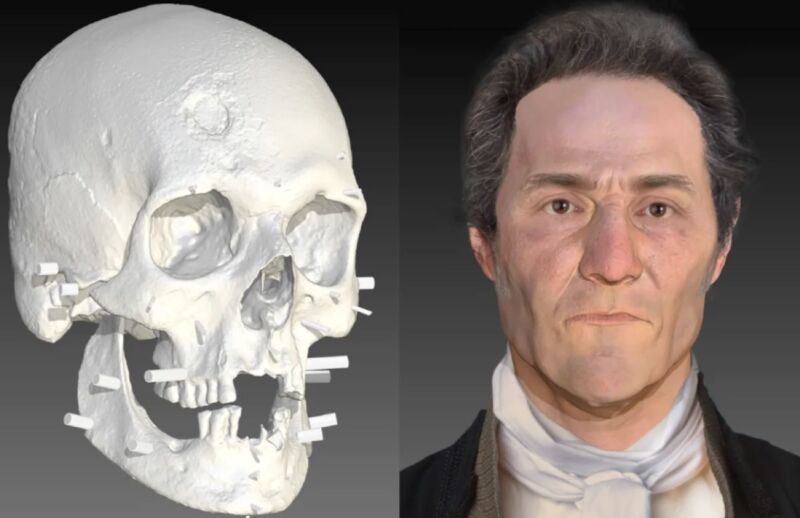We now have a pretty good idea what the “Connecticut vampire” looked like

Enlarge / Forensic facial reconstruction of the "Connecticut vampire" (aka JB55), accounting for known tooth loss and inferred health issues. Hair is based on 19th-century styles. Skin, hair, and eye color are based on phenotype predictions. (credit: Parabon NanoLabs )
Thanks to the efforts of Parabon NanoLabs and the Armed Forces DNA Identification Laboratory, we now know what the so-called "Connecticut vampire" probably looked like. Using DNA analysis and a 3D scan of the skull, the two labs collaborated to digitally reconstruct the face of the 19th-century man whose remains were discovered more than 30 years ago. The image was revealed earlier this month at the International Symposium on Human Identification conference in Washington, DC. The work also builds on earlier DNA analysis to strengthen the evidence that the man in question was a former resident named John Barber.
As we've reported previously, children playing near a gravel pit in Griswold, Connecticut, back in 1990 stumbled across a pair of skulls that had broken free of their graves in a 19th-century unmarked cemetery. Subsequent excavation revealed 27 graves-including that of a middle-age man identified only by the initials "JB55," spelled out in brass tacks on his coffin. Unlike the other burials, his skull and femurs were neatly arranged in the shape of a skull and crossbones, leading archaeologists to conclude that the man had been a suspected "vampire" by his community.
Analysis of JB55's bones in the 1990s indicated the man had been a middle-age laborer, around 55 when he died. The remains also showed signs of lesions on the ribs, so JB55 suffered from a chronic lung condition-most likely tuberculosis, known at the time as consumption. It was frequently lethal in the 1800s due to the lack of antibiotics, and symptoms included a bloody cough, jaundice (pale, yellowed skin), red and swollen eyes, and a general appearance of "wasting away." And the sickness often spread to family members. That could be why local folklore suspected some victims of being vampires, rising from the grave to sicken the community they left behind.